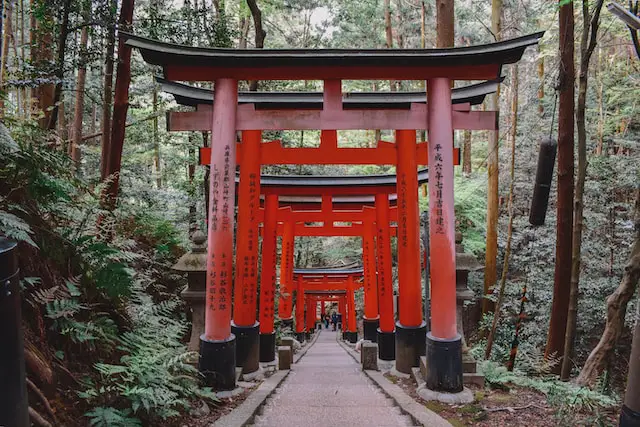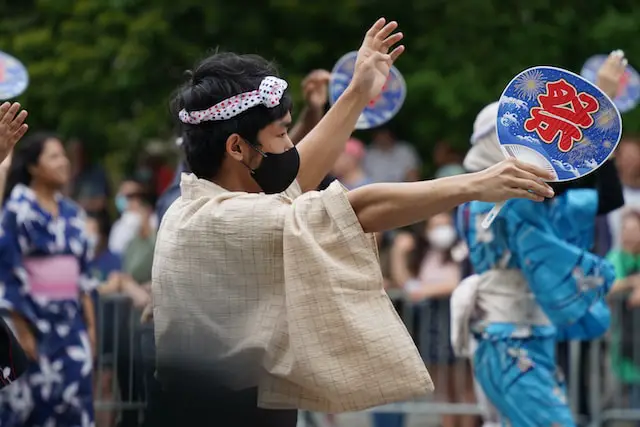Welcome to the world of Japanese cuisine, a remarkable repository of centuries-old techniques and traditions that surpass your everyday dining experience. If you are planning to travel to Japan, a deeper understanding of the country’s food culture will significantly elevate your journey.
Fulfilling, wholesome, and impeccable in its simplicity, Japanese culinary art is more than just sushi or ramen; it is a manifestation of an ancient culture that greatly values their food and the process of making it. For any food lover planning to visit Japan, understanding and experiencing this gastronomic legacy is perhaps the best way to familiarize oneself with the nation.
Japan’s mastery in blending taste, art, and nutrition in their dishes is a testament to their rich culinary heritage. So pack your chopsticks and let this food lover’s guide be your compass in the delicious labyrinth of Japanese cuisine.
Understanding Japanese Food Culture
The rich tapestry of Japanese cuisine, known as Washoku, is intrinsically tied to the country’s culture. A key aspect of this food tradition is its emphasis on seasonality. Japanese chefs meticulously choose their ingredients to reflect the changing seasons, an approach that not only provides fresh and healthful dishes, but also symbolizes their deep connection to nature.
This appreciation for seasonality is beautifully demonstrated in iconic seasonal dishes like Hamo (pike eel) for summer and Fugu (pufferfish) for winter. Not only do these seasonal ingredients bring variety to the Japanese table, but they also encapsulate the beauty of the country’s fleeting seasons.
Another quintessential aspect of Japanese food culture is the integration of the five senses in the eating experience. In Japanese gastronomy, a dish is not merely appreciated for its taste. The idea is to involve and engage all five senses – sight, taste, smell, hearing, and touch. For instance, sushi is not only about the taste, but also the vibrant visual appeal of the ingredients, the sound of the crispy seaweed, the aroma of the fresh seafood, and the tactile sensation of holding the sushi.
Truly, Japanese cuisine offers a multi-sensory experience that elevates dining to an art form, intimately linking it to the country’s natural and cultural landscapes. The beauty of the dishes, the precision of the presentation, the attention to seasonal ingredients, and the integration of the five senses all contribute to the unique culinary tapestry that defines Japan.
These nuances in the Japanese food culture, beyond just taste, are what make their culinary tradition uniquely profound and incredibly immersive. Truly, to understand and appreciate this rich culinary journey, appreciating Japan’s seasonal ingredients and the multi-sensory experience is a must.
So, embark this journey of understanding the Japanese food culture and, in turn, get ready to embrace the beauty and novelty of their culinary tradition.
Understanding Japanese Food Terminology
Welcome to your first step into navigating the delicious world of Japanese cuisine. Even for seasoned travellers, Japanese menus can seem daunting. But fear not – we’re here to break down some of the most common food names and descriptions, so you can order with confidence!
In Japan, many dishes are named after their main ingredient or the method of cooking used. For instance, ‘sushi’ refers to any dish made with vinegared rice, while ‘ramen’ is a type of noodle soup. ‘Tempura’, on the other hand, describes a cooking technique where ingredients are lightly battered and deep fried.
Getting the pronunciation right can be tricky but rewarding. Did you know ‘sushi’ is actually pronounced with a soft ‘i’, almost like ‘sush’? Or that the ‘ra’ in ‘ramen’ is not quite an ‘r’ and not quite an ‘l’, but something in-between? Remember, even if you struggle with pronunciation, Japanese people really appreciate the effort!
As you start to delve into the diverse world of Japanese food names and menu terminology, you’ll notice that each name is imbued with a sense of the dish’s heritage, ingredients, and cooking style. With a little practice and our handy guide, you’ll order your next meal in Japan like a local!
Popular Japanese Dishes to Try
For any food lover planning to travel to Japan, sampling the rich and diverse Japanese cuisine is an absolute must. The country is home to a myriad of culinary treasures ready to tantalize your palate.
At the heart of Japanese cuisine are iconic dishes like sushi, ramen, and tempura, each with a unique taste and texture, and each representing a piece of Japan’s long gastronomic history.
Sushi, comprising vinegared rice and diverse ingredients mostly featuring fish, is a staple both in Japan and around the world. Nothing beats the experience of eating a fresh piece of sushi in a quaint sushi shop in Japan. You can personalize your sushi order by choosing between options like ‘nigiri’, ‘maki’, and ‘temaki’
Famed for its soul-warming and savoury quality, ramen is a noodle soup dish that has its own distinct place in Japanese food culture. Every region in Japan has its own variation of ramen, showcasing the country’s regional diversity. Remember, when you eat ramen, slurping is not rude but rather a sign you’re appreciating the meal.
Tempura, typically consisting of seafood or vegetables that are covered in batter and deep-fried, is another must-try. Enjoy it with a dip in ‘tentsuyu’, a warm broth of soy sauce, mirin, and dashi, to make the flavors pop.
When savouring these dishes, it pays to be mindful of the craft that goes into each dish—the quality of ingredients, the expertise in preparation, and the artful presentation.
The opportunity to truly appreciate these dishes at their highest potential is unrivaled in Japan. It’s all about savouring each bite and understanding the work that goes into creating these culinary marvels. Bon Appétit!
Discovering Street Food and Izakaya Culture
Japan’s gastronomic culture is as rich and lively on the streets as it is in formal dining settings. A journey through Japanese Street food is essential for food lovers eager to discover the culinary delights this country has to offer. From bustling outdoor markets to yatai (mobile food carts), the street food scene offers a sensory feast of flavors, colors, and aromas.
Popular picks include Takoyaki (octopus balls), Okonomiyaki (savory pancakes), and Yakitori (skewered grilled chicken). Each bite is a true testament to Japan’s culinary diversity – blending traditional recipes with contemporary tastes.
Equally enchanting is the Izakaya culture. Izakaya can be best described as Japanese gastropubs where people gather for good, affordable food, and drinks. An izakaya visit offers an authentic slice of Japanese lifestyle and customs. Begin with a traditional greeting of “Irasshaimase” (Welcome) and a refreshing ‘nama’ beer.
Don’t miss trying sumptuous dishes such as Edamame (boiled young soybeans), Karaage (Japanese fried chicken), and Yakisoba (fried noodle dish). Izakaya promises a convivial atmosphere, where dining evolves into a memorable social experience. Whether you’re exploring street food or soaking up Izakaya culture, embracing these culinary treasures will significantly enrich your journey through the Land of the Rising Sun.
Navigating Japanese Restaurants and Etiquette
The journey to becoming a seasoned traveler in Japan wouldn’t be complete without delving into the Japanese dining etiquette and understanding different types of Japanese Restaurants. The attention to detail, precision, and respect that underpins the Japanese culture is evident in their dining etiquette. Your comfort and enjoyment in local dining settings rest largely on this understanding.
One may start with the simple gesture of saying ‘Itadakimasu’ (I humbly receive) before a meal, and ‘Gochisousama’ (Thank you for the meal) after finishing. These phrases, deeply rooted in gratitude and respect for the meal, showcases the reverence the Japanese hold for their food.
Moving on to the act of eating itself, chopstick usage is vital. Avoid passing food from chopstick to chopstick or standing them vertically in a bowl of rice, as these customs are associated with funerals. Remember to pick up shared dishes with the opposite end of your chopsticks to maintain hygiene.
In terms of different types of Japanese restaurants, there’s an abundance to explore. From ‘Izakaya’ (Japanese pubs), where food comes secondary to drinks, to ‘Ryotei’ (high-class traditional restaurants) and ‘Kaiten-zushi’ (conveyor belt sushi restaurants), each offers a unique dining experience. Familiarizing yourself with what to expect at these different restaurant types will allow you to make the most out of your dining experiences in Japan!
With these tips, you are one step closer to navigating the culinary exploration that awaits you in this gastronomical paradise.
Introduction to Kaiseki and Japanese Fine Dining
Japan’s culinary scene is a grand tapestry, with threads of tradition and modernism woven intricately together. Among its most exquisite dining experiences is Kaiseki, often considered the epitome of Japanese fine dining. Rooted in a custom associated with the tea ceremony, Kaiseki is an embodiment of culinary aesthetics and sophistication, demonstrating the utmost respect for seasonality and fresh ingredients.
Every Kaiseki meal unfolds like a carefully-curated orchestration of flavors, textures, cooking techniques, and stunningly beautiful presentations. It typically consists of a succession of small courses, showcasing the chef’s skills and creativity, as well as the ingredients themselves in their peak of freshness. Signature dishes may include chawanmushi (a savory egg custard), sashimi, seasonal grilled fish, miso soup, and a seasonal dessert.
Beyond Kaiseki, Japan’s upscale dining scene offers other equally remarkable experiences. Notable among these is sushi omakase, where the chef presents you a series of sushi, each carefully crafted using the freshest seafood. Japanese fine dining is more than just a meal; it’s a sensory journey that seems to epitomize Japan’s philosophy of striving for perfection.
So, for you, the adventurous food lover setting foot in Japan, ready yourself for an exquisite culinary exploration that transcends the boundaries of the ordinary. With an open mind and palate, your gastronomic journey through the world of Kaiseki and Japanese fine dining is bound to be a delightful and unforgettable one.
Conclusion: Embrace Your Culinary Adventure in Japan
Having understood the intricate art of Japanese cuisine, you are now ready to embark on an unforgettable culinary adventure. As you travel through Japan, let your taste buds be your guide. Every region presents its own unique rendition of traditional dishes, painting a vivid picture of Japan’s rich heritage and breathtaking landscapes.
Remember, dining in Japan is more than just a meal. It’s an opportunity to immerse yourself in the culture, traditions, and exquisite landscapes prevalent in each mouthful. This might mean seizing the opportunity to try a variety of sushi in Tsukiji fish market in Tokyo, to sample fresh tempura in a cozy restaurant in Kyoto, or to slurp up a hot bowl of ramen in snowy Hokkaido.
Street food vendors and izakayas alike are also a wealth of experience, allowing you to indulge in tantalizing snacks and dishes that represent Japan’s democratic palate. Don’t forget about fine dining too – Kaiseki and high-end sashimi establishments offer something entirely unique. Embrace the nuances of these culinary experiences, and let them enhance your journey.
Be brave and respect the customs. Whether it’s mastering the use of chopsticks, or understanding the intricacies of dining etiquette, take your time to enjoy and explore. Your culinary journey is as much about discovery as it is about indulging in delectable cuisine. Allow each tasting to tell a story making every bite a memory in your Japanese cuisine journey.
So, on your marks, get set, eat!





